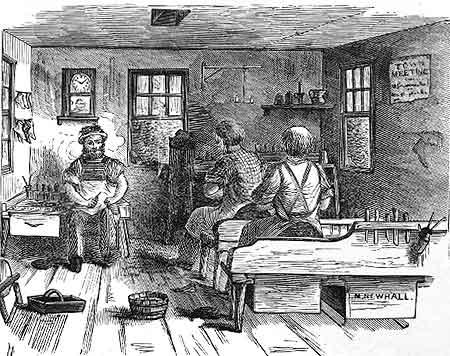talking history | syllabi | students | teachers | puzzle | about us
Shoemakers in a “ten-footer” shop.
Like many other industries, shoe manufacturing changed in the early 19th century. Previously, most shoemakers worked in their homes or small workshops (called “ten-footers”), where they took part in each stage of production. With the turn of the century, spurred by the increasing demand for cheap shoes, entrepreneurs established factories based on a greater division of labor. Production was divided into a number of stages that could each be completed by less-skilled workers. Those who owned larger shops prospered, while many skilled workers suffered as they were forced to become wage workers. By the time this engraving of a master and journeymen making shoes in a workshop attached to the master’s home was published in 1880, the shoemaker’s “ten-footer” was only a memory.

Source: (M. Newhall) David N. Johnson, Sketches of Lynn, or the Changes of Fifty Years (1880).
